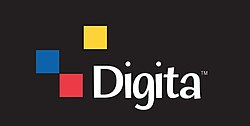History
DigitaOS debuted with the Kodak DC220 and DC260 on 20 May 1998; [5] both cameras were equipped with PowerPC 800 processors and USB interfaces. [6] In total, it was released on 11 camera models [7] before it was abandoned in 2001. [8] DigitaOS was notable for its ability to run third-party software, [9] a concept that was not again realized until the release of various Android based digital cameras in the early 2010s. [10] [11]
DigitaOS applications were programmed either as JIT compiled scripts using "Digita Script", [12] [13] which ran on the cameras, [14] or AOT compiled programs written in C [15] using an official SDK. [16] The operating system abstracted away most camera functionality and hardware platform differences, allowing software to be compatible with most DigitaOS cameras. [17] Additionally, DigitaOS handled the GUI presented to the user and basic camera functionality. [17]
DigitaOS was intended to extend the features of the camera. Examples of functions provided by scripts included in-camera image database and document generation, in-camera image editing, and custom logo / watermark and/or date imprinting. Printers with DigitaOS could resize photographs without connecting to a computer. [14] Digita File allowed the user to rename and copy image and system files on the camera, while Digita Presents was able to output a slideshow with audio and transition effects. [18]
Because of its ability to run third-party software, several games were ported to it. The most notable of these being DOOM [19] and MAME. [20]
This page is based on this
Wikipedia article Text is available under the
CC BY-SA 4.0 license; additional terms may apply.
Images, videos and audio are available under their respective licenses.

